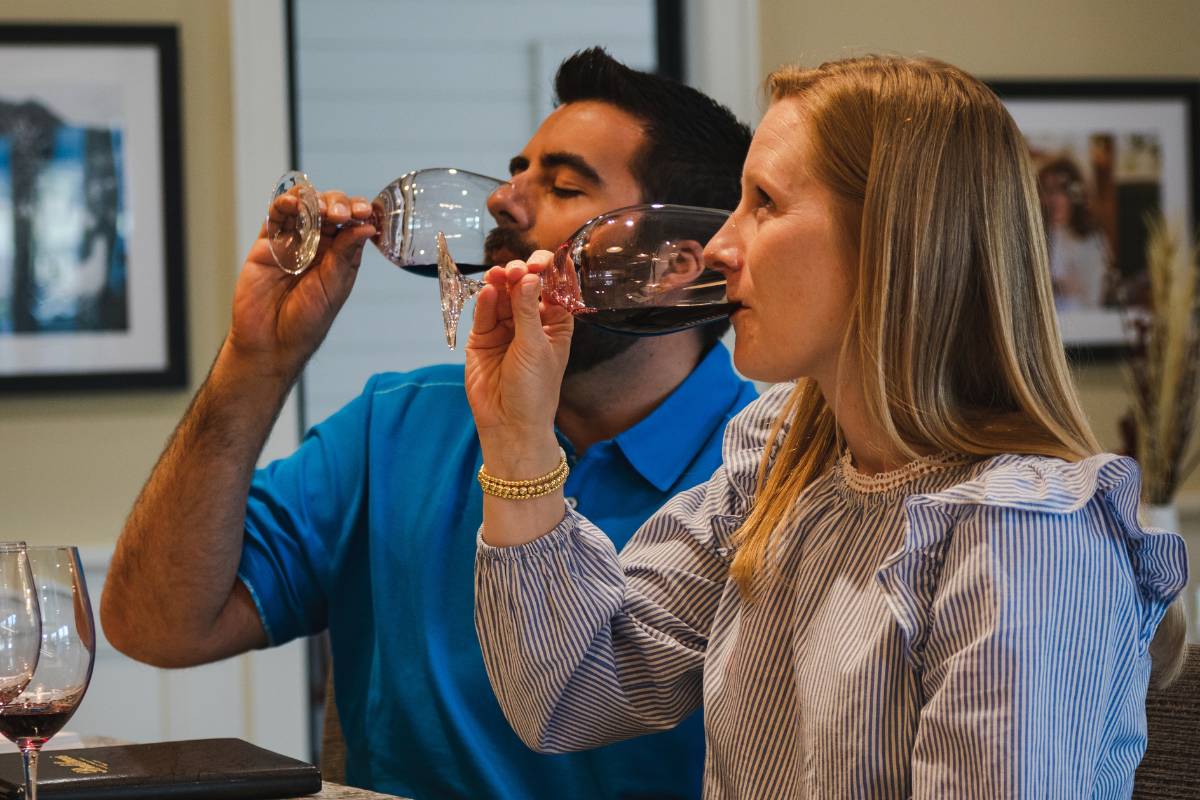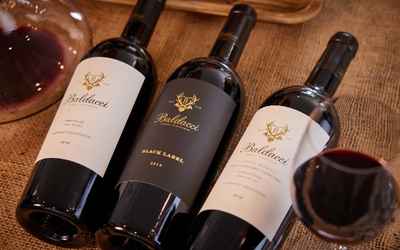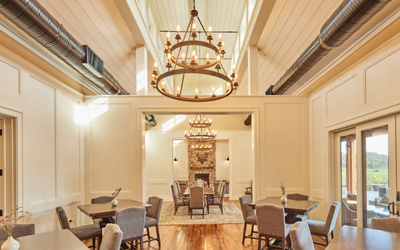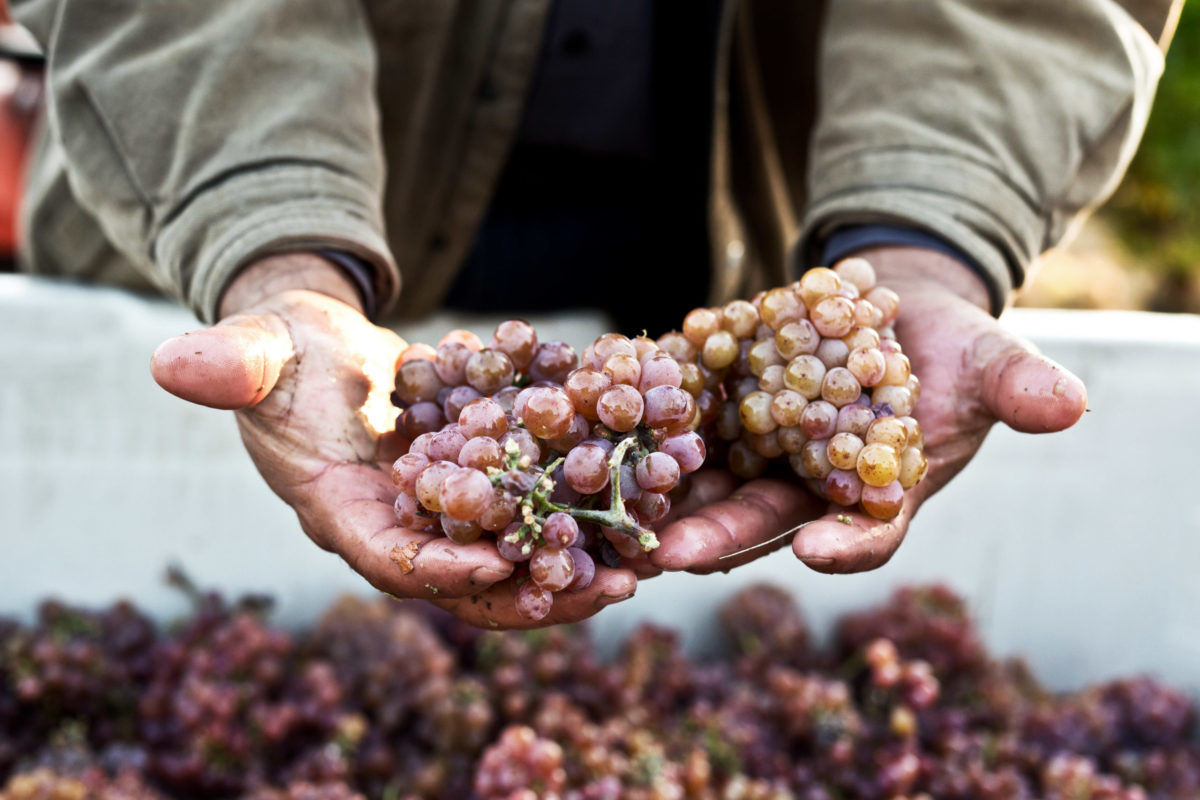
Part 3 – Sip: Evaluating the Flavors and Structure of Wine
Finally, we’re on to the fun part and the final “S”- Sip! As wine lovers, we can all agree that wine is delicious, and I’ll be the first to admit that wine can be quite enjoyable without analyzing its aromas, flavors, and structure. Sometimes you might just want to relax with a glass of bubbles or Cab after a long day, and there’s nothing wrong with that. But having some background knowledge and tools for evaluating wine on the palate can absolutely increase your enjoyment of the beverage – and you might even find that a casual analysis quickly becomes second nature!
As we discussed in the last post, much of what we taste is often derived from our sense of smell. This is helpful to keep in mind when you take a sip, because many of the aromas you already smelled will also be tasted on the palate. However, sometimes you’ll taste certain flavors you didn’t notice on the nose, and vice versa.
You also might be wondering about the whole “spitting” thing. While this might seem strange to anyone outside of the wine profession, spitting can be extremely helpful when evaluating multiple wines in one setting. It can also help you enjoy many aspects of the wine even if you want to avoid the intoxicating effects of alcohol, whether it be because you are the designated driver or for any other reason. Just keep in mind that small amounts of alcohol will still be absorbed, even when spitting.
Step 1: Evaluating the Flavors of the Wine
This first step will seem familiar, as it’s very similar to the process of evaluating aromas. If you are interested in taking a systematic approach, it can be helpful to write down all of the aromas you smell, in order to be able to then confirm them as flavors tasted on the palate. You’ll also want to note any new flavors, as well as any flavors that are slightly different from their corresponding aromas. For example, you may have smelled ripe cherry, but perhaps sense more of a tart, underripe cherry character on the palate.
Step 2: Evaluating the Structure of the Wine
Wine structure might seem like an oxymoron – wine is a liquid, after all – but the term “structure” refers to elements in the wine that provide certain sensations in the mouth and give the wine a “shape” on the palate. I like to use the acronym SATAB, which stands for Sweetness, Acidity, Tannin, Alcohol, and Body. Let’s cover each of these.
Sweetness/Dryness
This refers to the presence or absence of residual sugar in the wine. Keep in mind that most wines are dry, meaning they have no perceptible residual sugar. Often, what we perceive as sweetness is actually the fruitiness of the wine. Our brain smells and tastes ripe fruit and thinks “Sugar!” but in reality the wine may be dry. The next time you read a tasting note or wine label that states the wine is “dry”, think “not sweet”. For Champagne and sparkling wines, look for the terms “Brut”, “Extra Brut”, and “Brut Nature”, which indicate decreasing levels of sweetness, with Brut Nature being the most dry. And keep in mind that most wines are in fact dry unless otherwise stated.
Acidity
Acidity is gauged by how much your mouth waters when you take a sip. Focus on the salivary glands at the back of your mouth. Does your mouth immediately water, and does it continue to do so afterwards? If so, the wine has a higher level of acidity. If you don’t notice this effect, and the wine seems to fall flat without a mouthwatering, refreshing quality, then you likely have a low-acid wine.
Tannin
You know that mouth-drying, astringent sensation you often get when drinking red wine, especially certain varieties like Cabernet Sauvignon? Those are tannins! Tannins are mainly derived from the skins of the grape, but can also come from grape seeds and from oak barrels. That’s why thick-skinned grape varieties like Cabernet Sauvignon have higher levels of tannins, while thin-skinned grapes like Pinot Noir have lower levels.
Why do tannins dry out your mouth? Well, tannins tend to bind to proteins. Since we have protein in our saliva, when we take a sip of a tannic red wine, the tannins in the wine bind to these salivary proteins and produce that puckering effect. Keep in mind that describing these wines as “dry” may cause confusion, as “dry” (as discussed above) denotes a wine that isn’t sweet. Instead, I would suggest using the terms “drying”, “tannic” or “high tannin”.
Do you enjoy the drying sensation from tannins? Many people do, but some don’t. As with everything with wine, it all comes down to personal preference and individual sensitivities! If you’re not the biggest fan of tannic wines, there are a few ways you can mitigate this drying effect. We’ve all heard the classic Cabernet with steak pairing, and there’s a reason why this works. When you take a bit of steak and then a sip of Cab, the tannins in the wine will actually bind to the protein in the steak (and less so with your salivary proteins), creating less of a drying sensation. The fat in the steak and any accompanying butter-or cream-based sauce will also coat your mouth, providing a smoother, creamier feeling. Cheese works much the same way, also helping to mitigate the effect of tannins.
Fun fact: The word tannin derives from a Latin word for oak bark, which was used in the process of tanning animal hides to make leather.
Alcohol
Alcohol is perceived as a warm (or even burning) sensation in your nose, throat, and chest. This is why high-alcohol wines are often described as “hot”. Don’t feel any heat when you take a sip? You most likely have a low-alcohol wine (under 11% ABV). If you get a pronounced burning sensation in your throat and chest (akin to the feeling of taking a shot of vodka or tequila), then the wine is high in alcohol, potentially over 15% ABV.
Alcohol levels in dry (remember, not sweet) wines are directly correlated with the sugar ripeness levels in the grapes at harvest. What affects the sugar levels? Climate, of course, in addition to when the grapes are harvested. So, a dry Merlot from a cooler climate like Carneros is likely to be lower in alcohol than a dry Merlot grown in a warmer region such as St. Helena, when picked at the same time.
Body
Body describes how weighty the wine feels on your palate. I like to use the analogy of milk – think of how different nonfat milk, 2% milk, whole milk, and heavy cream feel in your mouth. A wine that feels more like nonfat milk, or even water, would be described as light-bodied; if it’s somewhere in the middle, you have a medium-bodied wine; and a wine that feels quite heavy on the palate is full-bodied.
Step 3: Evaluating the Quality of the Wine
Balance
Balance is often an element that can be sensed intuitively. Does one aspect of the wine stand out over the others, in an unpleasant way? The wine could be overly tart, or the wine could be lacking enough fruit to balance the higher alcohol. On the other end, if the wine is enjoyable overall and seems to flow seamlessly across your palate, the wine is balanced.
Length
Length refers to how long the wine’s pleasant flavors linger on the palate after you take a sip. If you continue to taste beautiful ripe blackberry and cherry flavors for more than ten or so seconds, that would be considered a long finish. If the flavors fall away immediately, then the wine has a short finish.
Complexity
A complex wine will have a multitude of aromas and flavors. You might find that you keep smelling and tasting new elements, and they all interact with each other in a positive way. On the other hand, if you’re truly struggling to name more than one or two aromas and flavors, the wine would be considered a “simple” or low-complexity wine.
At the end of the day, the most important question to ask yourself is, “Do I like the wine?” Hopefully, the answer is a resounding “yes!” If so, you can use the information we covered to consider why you enjoy the wine, and that will help you find more wines that match your taste preferences in the future. Similarly, if there is an aspect of the wine you don’t enjoy, you now have some tools to pinpoint whatever is causing that unpleasant response, and seek out more wines that don’t match that profile.
How do you go about doing this? Find a producer whose style you enjoy, and try more wines from their portfolio. This has never disappointed me. And remember, never be afraid to ask for guidance. One of my other favorite tips (which I follow myself) is to find a good local wine shop and get to know the staff. They will learn your own taste preferences quickly and be able to guide you toward more bottles you’ll enjoy.
Thanks for sticking with me through this series! I hope you now feel more confident and empowered when it comes to wine in general and have gained a better understanding of your own palate.
Cheers to further exploration through many more bottles!




